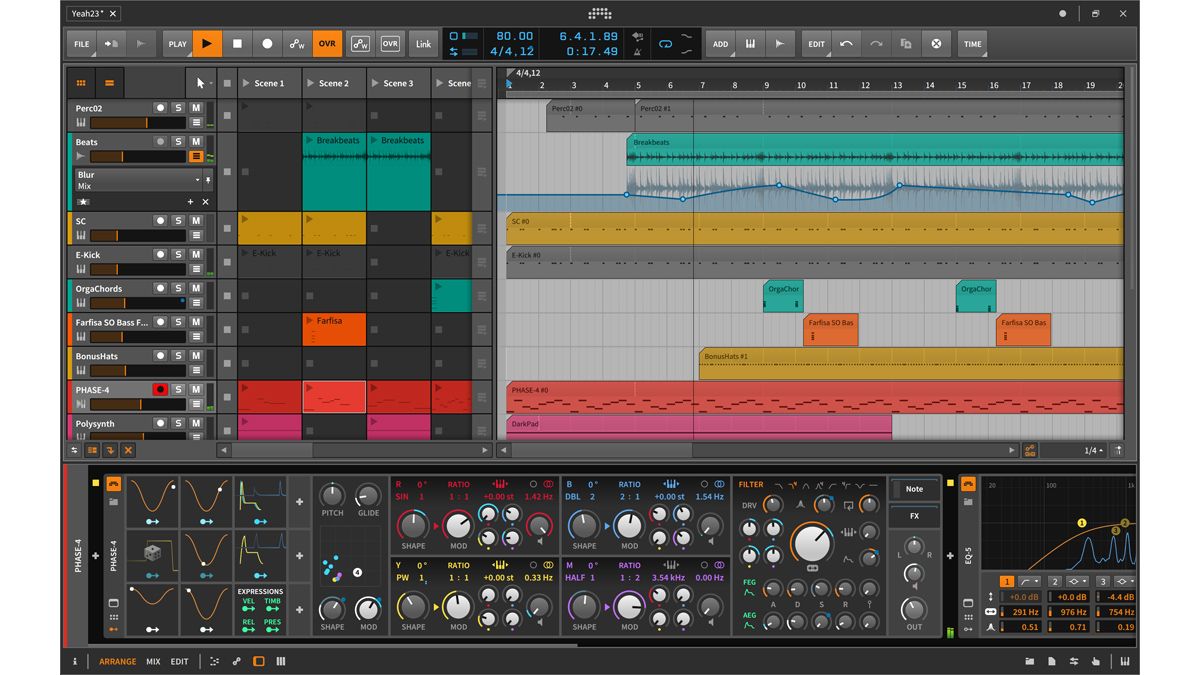Studio One 4 Device Block Size
- Studio One 4 Device Block Size Studio One
- Studio One Device Block Size
- Studio One 4 Device Block Size Calculator
- Mac OS X: Device Block Size is the audio device’s buffer size, which has a direct impact on your audio device’s performance. You can increase or decrease the Device Block Size by sliding the horizontal fader left or right. The appropriate setting depends upon your specific use of Studio One.
- Nov 13, 2017 When your device block size is set to 2048 samples it does not matter if your dropout protection is set to minimum or maximum. Simply because the process block size (Dropout protection = Maximum = 2048 samples) is equal to the device block size (2048 samples).
Since the introduction of the new Low Latency engine in 3.5 many people do not need to change their Device Block settings as often, you can read more about Studio one Audio Dropout Protection here. So remember this principle for trouble free recording and mixing - recording device block = low, mixing device block = high. My 'only' usage is that the keyboard sends the StyleOut via MIDI, and that I play bass with one hand and chords with the other hand. (Channel 3 for split voice and channel 1 for main voice). The current ASIO4 settings in Presonus are: Device block size: 128 samples Internal block size: 128 samples Process Precision: 64 Bit. My Device Block Size is set to 512 samples and I can't change it, higher or lower. My input and output latency settings won't change either. Input = 532 samples, output = 885, and same for sample rate 44.1 and bit depth 32, which I wouldn't want to change anyway. Windows:Internal Block Size can be locked to the Device Block Size by checking the Lock box (checked by default). The Internal Block Size is the software buffer size, which has a direct impact on your computer system and on Studio One’s performance. For more on this refer the Maximizing Computer Processing Power section of the manual. Dec 21, 2019 When I go to S1 4 audio settings, select Focusrite control panel and select any of the buffer sizes, for example 256, then S1 shows device block size '8 samples'. If I change device block size directly from S1 I can only select 8, 24, 40, 56, 72.
There is one setting in Studio One that can make a big difference when recording and mixing, and with this easy to remember principle you can fix both recording latency issues and the possibility of running out of power when mixing easily.
Download virtual dj. Virtual dj 6 pro free download. Multimedia tools downloads - VirtualDJ PRO Full by Atomix Productions and many more programs are available for instant and free download. Jun 13, 2010 Virtual DJ is a download software used by DJs to replace their turntables and CD players, and use digital music instead of vinyl and CDs. In the same way that the CD players used by DJs have more options than a regular Hi. Virtual DJ Software, MP3 and Video mix software. VirtualDJ provides instant BPM beat matching, synchronized sampler, scratch, automatic seamless loops.
The key to this is your DEVICE BLOCK settings.
When Recording - Set Your Device Block As Low As Possible
The aim when recording is to keep your latency as low as possible. This reduces the amount of delay between the time you play and when you hear it - this delay happens because the audio has to pass through A/D (analog to digital) conversion, be processed by Studio One and then back through the D/A (digital to analog) so you can hear it.
So set you device block settings to the lowest possible setting. You can find the setting in Studio One/Preferences/Audio Setup/Audio Device, it's the first of two tabs in the Audio Setup.
When Mixing - Set Your Device Block As High As Possible
Once you've done all your tracking and you want to mix with plug-ins then you need to give Studio One access to as much power as possible, so set your device block setting to as high as possible.
When mixing latency is less important, if you have your device block set too low and are using processor hungry plug-ins you may get drop outs and clicking - this is a sign of having your device block set too low.
Low Latency Monitoring
Studio One has some great technologies to help reduce latency, such as the new low-latency engine found in version 3.5 and above, but even with these, it's worth remembering this principle.
Studio One 4 Device Block Size Studio One
How to transfer garageband files between ipads. Since the introduction of the new Low Latency engine in 3.5 many people do not need to change their Device Block settings as often, you can read more about Studio one Audio Dropout Protection here.
Summary
So remember this principle for trouble free recording and mixing - recording device block = low, mixing device block = high.

